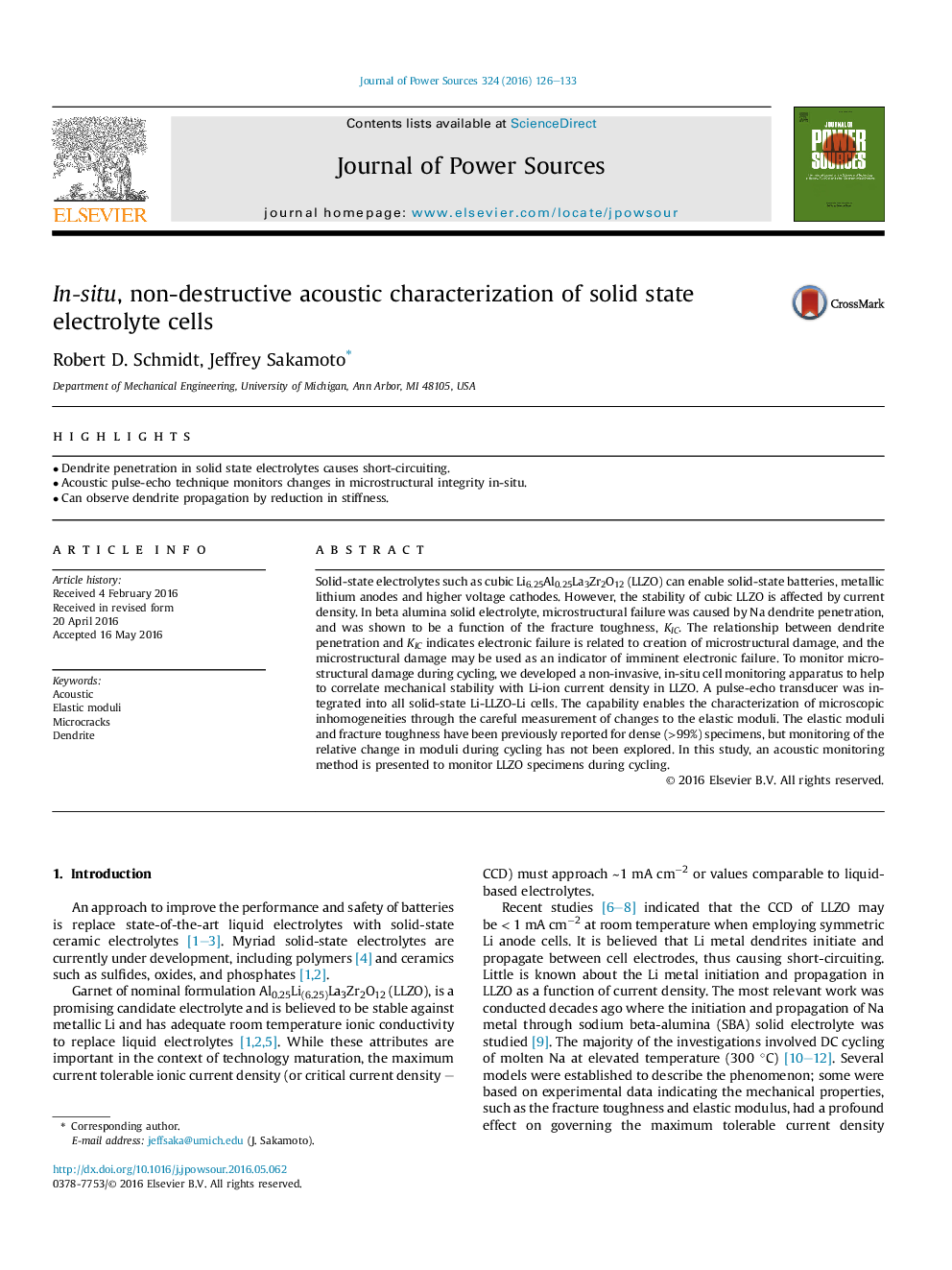| Article ID | Journal | Published Year | Pages | File Type |
|---|---|---|---|---|
| 7727584 | Journal of Power Sources | 2016 | 8 Pages |
Abstract
Solid-state electrolytes such as cubic Li6.25Al0.25La3Zr2O12 (LLZO) can enable solid-state batteries, metallic lithium anodes and higher voltage cathodes. However, the stability of cubic LLZO is affected by current density. In beta alumina solid electrolyte, microstructural failure was caused by Na dendrite penetration, and was shown to be a function of the fracture toughness, KIC. The relationship between dendrite penetration and KIC indicates electronic failure is related to creation of microstructural damage, and the microstructural damage may be used as an indicator of imminent electronic failure. To monitor microstructural damage during cycling, we developed a non-invasive, in-situ cell monitoring apparatus to help to correlate mechanical stability with Li-ion current density in LLZO. A pulse-echo transducer was integrated into all solid-state Li-LLZO-Li cells. The capability enables the characterization of microscopic inhomogeneities through the careful measurement of changes to the elastic moduli. The elastic moduli and fracture toughness have been previously reported for dense (>99%) specimens, but monitoring of the relative change in moduli during cycling has not been explored. In this study, an acoustic monitoring method is presented to monitor LLZO specimens during cycling.
Related Topics
Physical Sciences and Engineering
Chemistry
Electrochemistry
Authors
Robert D. Schmidt, Jeffrey Sakamoto,
